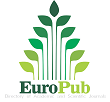Vol. 3 No. 4 (2025)
Published:
2025-10-31
 Open Access
Open Access
Article ID: 532
Traditionally, food packaging has relied on materials like plastic containers, newspaper, and ziplock bags. Nevertheless, the effectiveness of antioxidants in food items can vary significantly based on the type of packaging material used, in addition to the temperature and time of storage. This study investigates the stability of antioxidants, lipid peroxidation, protein/lipid composition, electrolyte levels, and stress genes expression in fruits and vegetables under refrigerated conditions (5–6 °C) for specific time intervals using different packaging materials. Grapes and cauliflower were analyzed for their biochemical and molecular stability in perforated ziplock covers, newspapers, and plastic containers at control, day 1, and day 15. Various technical methods were employed to estimate the parameters, including enzymatic activity assays and polymerase chain reaction (PCR) analysis visualized by agarose gel electrophoresis. Antioxidant levels, lipid peroxidation, protein/lipid composition, and electrolyte stability were significantly altered by packaging materials over time, for instance, after 15 days of refrigeration, the vitamin C content of cauliflower and grapes reduced by 40% in the ziplock cover group compared with the control, while the glutathione (GSH) content of cauliflower in the ziplock cover decreased by 20% (0.7 ± 0.08 to 0.5 ± 0.05). The GSH content of grapes in the ziplock cover decreased by ~33% (1.8 to 1.2 µg/mg protein) compared with the control, while newspaper and plastic groups showed very minimal reductions (~5%). Ziplock covers notably showed the highest detrimental impact on all parameters compared to newspapers and plastic containers. Stress genes expression was also significantly downregulated, particularly in ziplock packaging, indicating its adverse effect on metabolic processes and gene regulation. Ziplock covers have a pronounced negative effect on the stability of antioxidants, biochemical components, and stress genes expression in refrigerated fruits and vegetables. The findings suggest that none of the tested packaging materials effectively retain nutritional and molecular stability under these conditions, highlighting the need for improved packaging solutions.
2972-4309 (O)
Quarterly



.jpg)
.jpg)